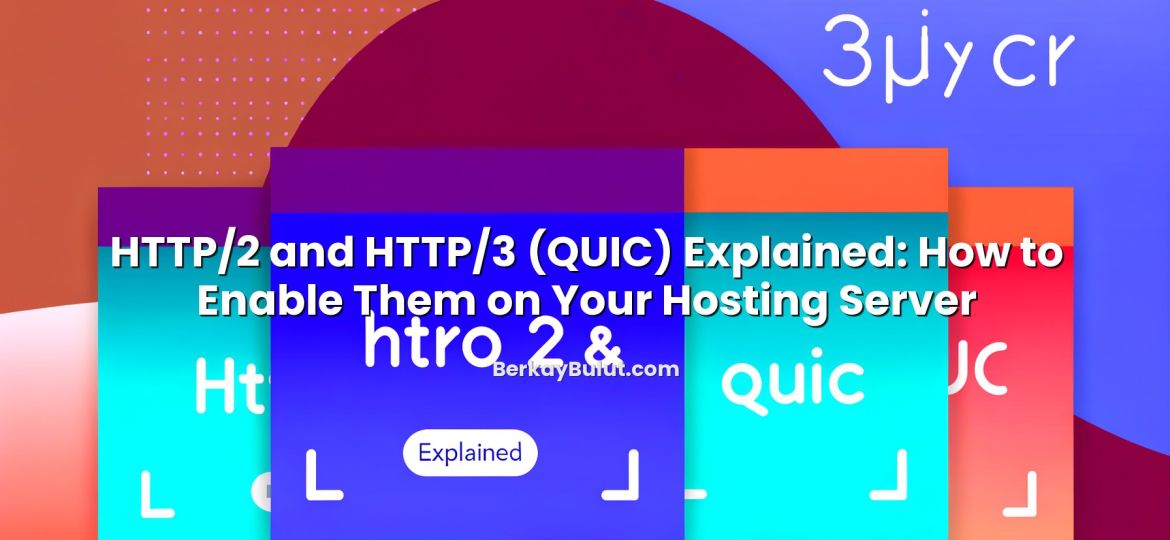Buying expired domains looks attractive on paper: instant backlinks, existing authority, and sometimes even type-in traffic from old users. But in practice, expired domains are one of the easiest ways to inherit someone else’s SEO problems. Over the years, while planning architectures, managing migrations and cleaning up penalties, I have seen expired domains either accelerate growth or quietly destroy organic visibility. The difference is almost always due diligence and how the domain is used. In this article, we will walk through the real SEO risks, possible penalties, and where the genuine opportunities lie. You will learn how to evaluate an expired domain from both an SEO and technical perspective, how to avoid taking over a toxic legacy, and how to integrate it safely into your current hosting and infrastructure. If you are considering bidding on a dropped domain or redirecting one to your main project, treat this as your practical pre-purchase checklist.
What Is an Expired Domain and Why Do People Buy Them?
What counts as an expired domain?
An expired domain is a domain name whose previous owner did not renew it. After a grace period at the registrar, it may enter an auction phase, a redemption period, and finally be released to the public again. From your perspective, it looks like a normal domain you can register, but in reality it may carry years of content, backlinks, redirects, and history.
Why marketers and developers chase expired domains
There are a few common reasons people buy expired domains:
- Existing backlink profile: The domain may already have links from reputable sites, which can help SEO if used correctly.
- Brand and naming: Short or memorable names that become available again are valuable for branding and future projects.
- Residual traffic: Old bookmarks, mentions and type-in traffic can still send visitors.
- Local or niche relevance: A domain that used to serve a specific industry or region can be reused in the same niche.
On the flip side, expired domains can also come with spammy link histories, manual penalties, or abusive uses (malware, scams). In Turkish, I have covered similar topics in my Turkish guide on expired domain SEO risks and opportunities; here we will focus on an English and more infrastructure-oriented view.
SEO Risks and Penalties When Buying Expired Domains
Algorithmic risk: inheriting a bad link profile
Search engines evaluate a domain’s history. If most backlinks are from spammy directories, hacked sites, automated comment spam or irrelevant languages/topics, the algorithm can discount or even treat the site as low quality. When you take over that domain, you also take over that reputation.
Red flags in the backlink profile include:
- Over-optimized anchors like “cheap casino bonus”, “online pills”, etc.
- Backlinks from obvious link farms, spun blogs or PBNs.
- Sudden spikes or drops in link count for no good reason.
- Many links from unrelated countries or languages with no logical connection to your planned use.
If you plan to redirect the domain to your primary project, that bad profile can dilute your main site’s trust, not just the expired domain itself.
Manual penalties: the invisible landmine
A manual penalty is when a search engine’s webspam team applies a specific action to a site for violations like unnatural links, pure spam, or thin content. If the previous owner was hit with such a penalty and never properly cleaned it up, you might be buying a domain that is partially or completely suppressed in search results.
For domains you already control, you can check this in webmaster/console tools. But for an expired domain you have not registered yet, you only have indirect signals:
- The domain does not appear at all for its own name or brand queries.
- The
site:example.comsearch shows few or no indexed pages, despite a rich history in web archives. - Third-party visibility tools show a sharp drop in organic traffic at a specific date, never recovering.
Buying and using such a domain may require a long clean-up and reconsideration process, with no guarantee of full recovery.
Deindexing, spam usage and malware history
Some expired domains were previously used for phishing, malware distribution, adult content, or aggressive affiliate schemes. These can be:
- Deindexed (completely removed from search results).
- Flagged by browser security tools and email filters.
- Blacklisted at security vendors or abuse databases.
Even if you clean the content and use the domain for a legitimate project, it may take significant time to rebuild trust. In severe cases, it is more efficient to abandon the domain than to fight its legacy.
Topical chaos: irrelevant history
Search engines do not only look at links; they also track what a site has historically been about. If a domain spent ten years as a cooking blog and suddenly becomes a crypto exchange, the mismatch is suspicious. This does not mean you cannot repurpose a domain, but when the new topic is completely unrelated, you should not expect much SEO benefit from the old links or rankings.
The more your new project aligns with the old site’s topic and audience, the safer and more effective the reuse becomes.
Legal and brand risks
There is also the non-technical side. An expired domain may still be:
- Associated with a trademarked brand or product.
- Mentioned in old contracts, invoices or legal documents.
- Used in negative news, scandals or lawsuits.
Buying such a domain may bring you unwanted legal attention or brand confusion. Cross-check the name against trademarks, and search the domain in quotation marks to see if it appears in news, forums or court documents.
Due Diligence Checklist Before You Buy an Expired Domain
1. Basic identity: WHOIS, age and ownership patterns
Start with the basics:
- Check registration age and previous registrars/owners.
- Look for frequent ownership changes, which may be a sign of flipping or abuse.
- Confirm the domain is not on hold or in a legal dispute.
Combine this with a general understanding of domain lifecycle; if you are new to that, you can review a more general detailed domain purchasing guide before going deep into expired names.
2. Indexation and visibility: does the domain still exist in search?
Use simple queries:
site:example.com– to see indexed pages."example.com"– to see mentions and references.- Brand or old site name – based on what you find in archives.
If there are zero results for site:example.com but the domain clearly had content in the past (verified via archive tools), be cautious. It can be a sign of manual action or a strong algorithmic demotion.
3. Backlink profile: quality over quantity
This is the most critical step from an SEO standpoint. Using any reliable link analysis tool, review:
- Link sources: Are they real websites or automated spam?
- Anchor text distribution: Natural mixture of brand, URL and generic anchors, or purely commercial phrases?
- Topical relevance: Do linking sites operate in related niches?
- Lost links: Did most strong links disappear years ago?
Remember: a small number of relevant, high-quality links is far better than thousands of low-quality entries. If the link profile looks toxic, walk away. There are many clean domains you can build from scratch while following SEO tips specifically for domains instead of inheriting a mess.
4. Content and use history: what lived on this domain?
Use web archive services to inspect multiple snapshots over time:
- Was it a real project with genuine content?
- Did it suddenly switch topics (e.g., from local business site to spammy blog network)?
- Is there any indication of adult, gambling or illegal content?
Ideally, you want a stable, legitimate history in a topic that is reasonably aligned with your new project. The more drastic the content shifts, the more carefully you should proceed.
5. Technical reputation: DNS, email and blacklists
Beyond SEO, check if the domain has a bad technical reputation:
- Look it up in common spam and malware blacklists.
- Check whether the domain or its IPs appear in email blacklists (if you plan to send mail from it).
- Review old DNS records if possible, especially MX records for email usage.
If you plan to use the domain for email, you will eventually need to configure correct MX, SPF, DKIM and DMARC records; for a step-by-step understanding of DNS fundamentals, my explanation of essential DNS records is a good starting point.
Safe Ways to Use Expired Domains
Option 1: Rebuild the old site in the same niche
The safest SEO approach is to rebuild a site that is similar to what originally lived there:
- Same language and region.
- Similar topics and content structure.
- Updated, higher-quality versions of the old content (not copied, but inspired).
This keeps the historical signals consistent. Over time, you can introduce new sections and pivot slightly, but the closer the new project is to the old one, the more of the existing “authority” you can retain legitimately.
Option 2: Microsite that supports your main brand
Another approach is to create a small, focused site around a specific topic that is relevant to your main brand. The microsite can:
- Publish in-depth content that naturally links to your main domain.
- Serve as a content hub for a sub-niche.
- Capture local or long-tail queries.
Here, the expired domain is used as a stand-alone property, not solely as a redirect or link manipulation tool. This is slower but much safer than aggressive redirect strategies.
Option 3: Carefully planned 301 redirect
Sometimes you only want the brand and link equity. In this case, you can implement a 301 redirect from the expired domain to:
- The most relevant section of your main site (not just the homepage).
- A dedicated landing page that explains the transition.
Best practices for redirects include:
- Avoid long redirect chains (domain A → B → C).
- Redirect at the server level, not only via meta refresh or JavaScript.
- Keep redirects stable over time; constant changes look unnatural.
- Use HTTPS with proper certificates and redirect HTTP to HTTPS cleanly.
If you are planning a broader protocol migration at the same time, refer to the SEO-safe HTTP to HTTPS migration guide so you do not combine domain and protocol changes in a chaotic way.
When Expired Domains Are Not Worth It
Heavy spam footprint and suspicious anchors
If you see anchors dominated by adult, casino, pharma or obvious spam, and the majority of links come from weak or irrelevant sites, it is almost never worth the effort. You would spend more time trying to disavow and clean up than you would building a fresh domain properly.
Complete deindexing without clear reason
A domain that is entirely absent from search results, yet had a long and active history, is a major red flag. While there are rare false positives, in most cases there is a serious underlying issue. Unless the brand value is extraordinary, it is safer to walk away.
Brand conflicts and legal risks
If the domain clearly matches an existing brand name in the same industry or region, treat it carefully. Even if the domain has expired, the trademark and legal rights may still be very active. The cost of a potential dispute usually far exceeds any SEO benefit.
Opportunity cost vs. clean start
From a practical standpoint, the time you spend researching, cleaning and cautiously using a problematic expired domain could be invested into:
- Launching a clean, well-structured new domain.
- Optimizing your hosting and server performance.
- Producing high-quality content and earning natural links.
In many projects I have managed, a solid new domain on reliable infrastructure (for example, a well-configured VPS at a provider like DCHost) combined with proper on-page SEO has outperformed risky expired domains in the medium term.
Technical Implementation: DNS, Hosting and SSL Considerations
Choosing the right hosting and architecture
Before pointing an expired domain anywhere, define how it will fit into your infrastructure:
- Standalone site on its own VPS or shared hosting.
- Addon domain on an existing server.
- Reverse proxy or load-balanced setup for high-traffic projects.
If you expect traffic or plan long-term use, a dedicated VPS or cloud instance from a provider such as DCHost gives you more control over SSL, redirects, server rules and security. For broader architectural decisions, you may find it useful to compare different server models in detail, similar to how we evaluate options in choosing the right server architecture.
DNS configuration: keep it clean and simple
Once you decide on the hosting model, configure DNS:
- Set A or AAAA records to point to your server’s IP.
- Add MX records only if you will handle email for this domain.
- Use CNAME carefully for subdomains, avoiding loops.
Misconfigured DNS can cause downtime, mail delivery problems, or even security issues. Again, if you need a refresher, the earlier mentioned DNS records guide covers the basics thoroughly.
SSL certificates and HTTPS
Whether you rebuild a site or only serve redirects, always secure the domain with HTTPS. This protects users, aligns with modern browser expectations, and avoids mixed content warnings when redirecting. You can choose between free and paid SSL options; your decision will depend on validation level and management preferences. For a detailed comparison, see the article Lets Encrypt vs paid SSL certificates and which you really need.
Once SSL is in place, configure your web server to:
- Redirect
http://tohttps://with 301 status codes. - Avoid redirect loops between domains and protocols.
- Set HSTS carefully if you are confident in the stability of your HTTPS setup.
Migrating content and minimizing downtime
If you decide to migrate an existing project to an expired domain (or vice versa), plan it like any other migration:
- Backup files and databases.
- Test on a staging environment.
- Prepare redirect maps for important URLs.
With proper DNS timing and server-side redirects, you can achieve near-zero downtime. The same principles apply as in a regular host move, such as those described in the guide to migrating your website to a new hosting provider with zero downtime.
Conclusion: When Expired Domains Make Sense – and When They Do Not
Expired domains sit at the intersection of SEO, infrastructure and risk management. They can be a shortcut to authority if the history is clean, the topic is aligned, and the technical implementation is thoughtful. They can also be a silent anchor that pulls your entire project down with penalties, spammy backlinks and trust issues. The key is to treat each candidate domain as a small acquisition: you are buying not just a name, but a history and reputation.
Before placing a bid, walk through the due diligence steps: indexation checks, backlink analysis, content history, blacklist status and legal considerations. Decide upfront whether you will rebuild the site, use it as a microsite, or apply a careful 301 redirect. Then design a clean DNS, hosting and SSL setup—on solid infrastructure, such as a well-managed server from DCHost—to avoid technical surprises.
If a domain passes all checks and fits your long-term strategy, it can be a powerful asset. If not, do not hesitate to let it go and invest in a clean domain where you control every signal from day one. With disciplined evaluation and proper technical execution, you can turn expired domains from a gamble into a calculated, manageable opportunity.










